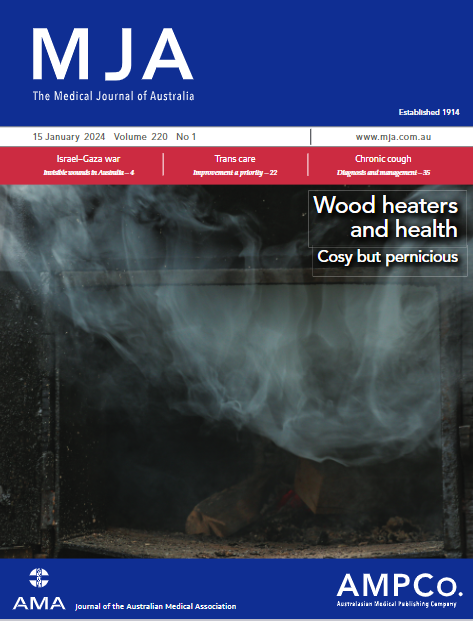Early cardiovascular collapse after envenoming by snakes in Australia, 2005–2020: an observational study (ASP-31)
Abstract
Objectives
To investigate the frequency, timing, and characteristics of cardiovascular collapse after snakebite in Australia, and the complications of collapse following envenoming.
Study design
Observational study; analysis of prospectively collected demographic and clinical data.
Setting, participants
People with confirmed snake envenoming recruited to the Australian Snakebite Project at one of 200 participating Australian hospitals, 1 July 2005 – 30 June 2020.
Main outcome measures
Time from snakebite to collapse; post-collapse complications (cardiac arrest, seizures, death).
Results
Of 1259 envenomed people, 157 (12%) collapsed within 24 hours of the snakebite; venom-induced consumption coagulopathy (VICC) was determined in all 156 people for whom coagulation testing could be performed. The exact time between bite and collapse was known for 149 people (median, 20 min; interquartile range, 15–30 min; range, 5–115 min); the time exceeded 60 minutes for only two people, each after releasing tight bandages 60 minutes after the bite. The collapse preceded hospital arrival in 132 cases (84%). Brown snake (Pseudonaja spp.) envenoming was the leading cause of collapse (103 cases, 66%). Forty-two collapses (27%) were followed by cardiac arrest, 49 (31%) by seizures (33 without cardiac arrest), and five by apnoea; collapse was associated with hypotension in all 24 people whose blood pressure could be measured at or close to the time of collapse. Twenty-five people who collapsed died (16%), and seven of the envenomed people who did not collapse (0.6%; difference: 15 percentage points; 95% confidence interval, 8–21 percentage points). The deaths of 21 of the 25 people who collapsed were immediately associated with the cardiac arrest that followed the collapse; three people who did not have cardiac arrests died later of intracranial haemorrhage, and one of hyperthermia. The proportion of people who had collapsed before reaching hospital was larger for people who died of post-collapse cardiac arrest (13 of 21, 62%) than for those who survived (6 of 21, 28%).
Conclusion
Collapse after Australian snake envenoming almost always occurred within 60 minutes of the bite, was always accompanied by VICC, and most frequently followed brown snake bites. Poorer outcomes, including cardiac arrest, seizures, and death, were more frequent for people who collapsed than for those who did not. Outcomes for people who collapsed before medical care arrived were poorer than for those who collapsed in hospital or in an ambulance.


 求助内容:
求助内容: 应助结果提醒方式:
应助结果提醒方式:


